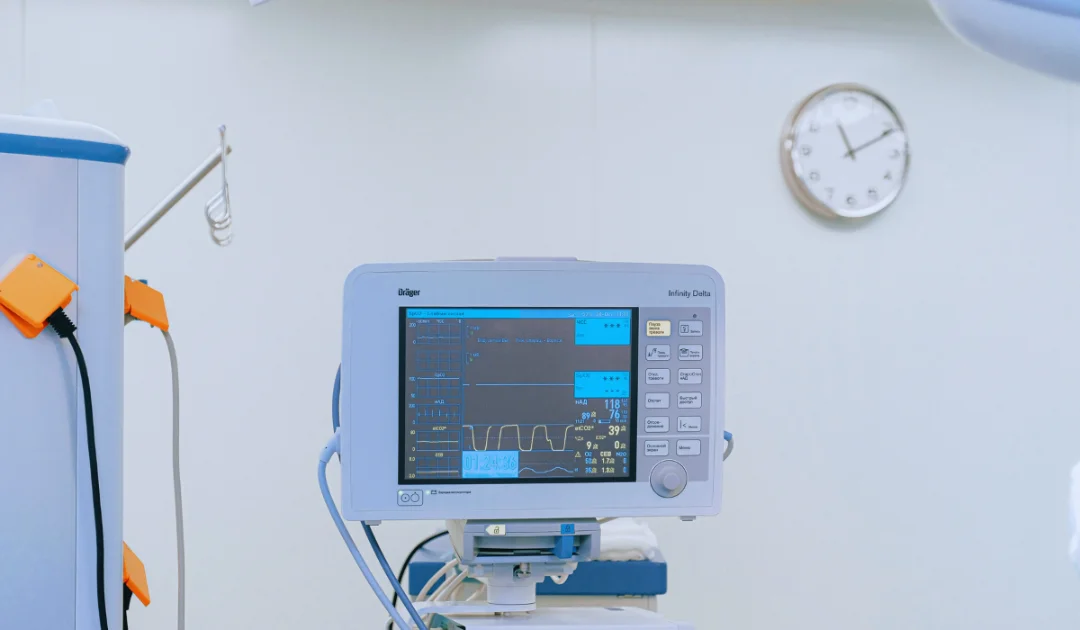Why Your Hospital PACS Strategy Could Make or Break Your Digital Future
September 29, 2025

Healthcare leaders face an uncomfortable truth: the imaging infrastructure decisions you make today will determine your organization’s competitive position for the next decade. Picture Archiving and Communication Systems (Hospital PACS) have quietly evolved from simple digital filing cabinets into the strategic backbone of modern healthcare delivery—and organizations that fail to recognize this shift are already falling behind.
The question isn’t whether your hospital needs advanced imaging capabilities. The question is whether your current PACS infrastructure can support the AI-driven, interconnected, value-based healthcare environment that’s rapidly becoming the new standard of care.

The Great Hospital PACS Transformation: Beyond Digital Storage
The story of PACS begins in the 1980s, born from a simple yet revolutionary idea: digitize medical imaging to eliminate the inefficiencies of physical film management. Early adopters envisioned a world where radiologists could access images instantly, without hunting through physical archives or waiting for film to be transported between departments.
However, these pioneering PACS implementations were essentially digital islands. Radiology departments operated standalone systems with minimal integration beyond their departmental boundaries. While these early systems successfully digitized workflows within radiology, they created new challenges in information sharing and cross-departmental collaboration.
The emergence of standards like DICOM (Digital Imaging and Communications in Medicine) represented a crucial step forward, enabling basic image exchange between different imaging modalities and PACS vendors. Yet true interoperability remained elusive, with most systems functioning as sophisticated digital filing cabinets rather than integrated healthcare platforms.
This siloed approach worked adequately when healthcare delivery was more compartmentalized. But as medicine evolved toward multidisciplinary care teams and value-based outcomes, the limitations of isolated PACS became increasingly apparent.
The Hidden Crisis: When Legacy Systems Become Strategic Liabilities
Several converging trends have fundamentally altered the Hospital PACS landscape, demanding more sophisticated and integrated solutions:
Exponential Imaging Growth: Modern healthcare generates unprecedented volumes of imaging data. Advanced modalities like multi-slice CT, high-field MRI, and molecular imaging produce massive datasets that dwarf the storage requirements of traditional X-rays. A single cardiac CT study can generate thousands of images, compared to the handful produced by conventional radiography.
Specialty Expansion: Imaging is no longer confined to radiology departments. Cardiology, oncology, orthopedics, dermatology, emergency medicine, and even surgical specialties now rely heavily on imaging for diagnosis, treatment planning, and monitoring. Each specialty brings unique requirements for image visualization, measurement tools, and workflow integration.
Geographic Distribution: Healthcare organizations have expanded beyond single facilities to encompass multiple hospitals, outpatient centers, and specialty clinics. This geographic distribution demands seamless image sharing across locations while maintaining consistent quality and security standards.
Regulatory and Compliance Pressures: Healthcare organizations face increasing demands for data portability, patient access to imaging records, and integration with health information exchanges. Legacy PACS often struggle to meet these evolving regulatory requirements efficiently.
Economic Pressures: Value-based care models require healthcare organizations to optimize efficiency while improving outcomes. This economic reality demands imaging systems that reduce redundant studies, accelerate diagnosis, and support coordinated care delivery.
Breaking Free from Silos: The Enterprise Imaging Revolution
The response to these challenges has been the evolution toward enterprise imaging—a strategic approach that treats medical imaging as an organization-wide capability rather than a departmental function. Enterprise imaging represents a fundamental shift in how healthcare organizations conceptualize and deploy imaging technology.
Unlike traditional PACS, enterprise imaging solutions are designed for universal access and integration. They enable any authorized clinician, regardless of department or location, to access relevant imaging studies through familiar interfaces. This accessibility transforms imaging from a radiology-centric resource into a truly collaborative tool for multidisciplinary care teams.
Key characteristics of enterprise imaging include:
Unified Data Architecture: Rather than maintaining separate image repositories for different specialties, enterprise imaging creates a single, comprehensive imaging platform that accommodates diverse image types and clinical workflows.
EHR Integration: Seamless integration with electronic health records ensures that imaging becomes part of the patient’s complete clinical narrative, accessible alongside laboratory results, medication lists, and clinical notes.
Advanced Analytics: Enterprise imaging platforms provide insights into imaging utilization patterns, efficiency metrics, and quality indicators, enabling data-driven optimization of imaging operations.
Scalable Infrastructure: Cloud-native architectures and flexible deployment models allow organizations to scale imaging capabilities dynamically as volumes and requirements evolve.
Next-Generation Hospital PACS: Where AI Meets Clinical Excellence
Today’s leading PACS solutions bear little resemblance to their predecessors. Modern PACS function as intelligent imaging platforms that actively enhance clinical decision-making rather than simply storing and retrieving images.
AI-Powered Workflows: Artificial intelligence is transforming every aspect of medical imaging, from initial image acquisition to final reporting. Modern PACS integrate AI tools that can prioritize critical findings, automate routine measurements, detect incidental findings, and even suggest differential diagnoses. This AI integration doesn’t replace radiologist expertise but amplifies it, enabling more efficient and accurate interpretations.
Cloud-Native Architecture: Cloud technology has revolutionized PACS deployment and management. Cloud-native PACS offer virtually unlimited scalability, robust disaster recovery capabilities, and the flexibility to support remote reading and telemedicine initiatives. Organizations can provision storage dynamically, access images from any location, and benefit from automatic software updates without the complexity of managing on-premise infrastructure.
Zero-Footprint Viewing: Modern Hospital PACS eliminate the need for specialized workstation software, enabling clinicians to access diagnostic-quality images through standard web browsers. This capability is particularly valuable for referring physicians, emergency departments, and mobile clinical teams who need immediate access to imaging studies.
Advanced Visualization: Contemporary PACS incorporate sophisticated visualization tools that go far beyond basic image display. Three-dimensional reconstruction, multi-planar reformatting, fusion imaging, and advanced post-processing capabilities enable clinicians to extract maximum diagnostic value from imaging studies.
Workflow Orchestration: Modern PACS intelligently route studies based on clinical priorities, radiologist subspecialty expertise, and workload balancing algorithms. This orchestration ensures that critical studies receive immediate attention while optimizing overall department efficiency.

The Bottom Line: PACS as Competitive Differentiator
The evolution of PACS from departmental tools to enterprise platforms has profound strategic implications for healthcare organizations. Leadership teams must recognize that imaging infrastructure decisions impact far more than radiology department operations.
Competitive Advantage: Organizations with modern, integrated imaging capabilities can offer superior patient experiences, faster time-to-diagnosis, and more coordinated care delivery. These advantages translate directly into patient satisfaction, physician recruitment, and market differentiation.
Operational Efficiency: Advanced Hospital PACS reduce the time clinicians spend accessing and interpreting images, eliminate redundant studies, and streamline referral processes. These efficiency gains compound across the entire organization, improving throughput and reducing costs.
Quality and Safety: Modern PACS include sophisticated quality assurance tools, automated compliance monitoring, and AI-powered safety checks that help prevent errors and ensure consistent care delivery.
Data Asset Maximization: Healthcare organizations generate enormous amounts of imaging data that, when properly managed and analyzed, can provide insights into population health trends, treatment effectiveness, and operational optimization opportunities.
Future Readiness: As healthcare continues its digital transformation, organizations with modern imaging infrastructure are better positioned to adopt new technologies, participate in research initiatives, and respond to changing regulatory requirements.
Your PACS Decision Framework: Leading vs. Following
Healthcare organizations face a critical decision point regarding their imaging infrastructure. Continuing with legacy PACS systems may seem cost-effective in the short term, but this approach increasingly exposes organizations to competitive disadvantages, operational inefficiencies, and missed opportunities for clinical innovation.
When evaluating modern PACS solutions, organizations should prioritize platforms that offer:
Scalable Architecture: Solutions that can grow with the organization and adapt to changing requirements without major infrastructure overhauls.
Open Integration: Platforms that embrace industry standards and facilitate integration with existing and future healthcare technologies.
AI Readiness: Systems designed to incorporate artificial intelligence tools as they mature and prove their clinical value.
Flexible Deployment: Options for cloud, on-premise, or hybrid deployments that align with organizational preferences and regulatory requirements.
Vendor-Neutral Philosophy: Solutions that avoid vendor lock-in and provide freedom to choose best-of-breed technologies as they emerge.
The organizations that thrive in healthcare’s digital future will be those that recognize imaging not as a departmental function but as a strategic capability that touches every aspect of patient care. Modern PACS represent more than technology investments—they are foundational elements of competitive healthcare delivery in the 21st century.
The question is not whether your organization will eventually adopt modern imaging infrastructure, but whether you’ll be among the leaders or the followers in this critical transformation. The choice you make today will determine your position in tomorrow’s healthcare landscape.